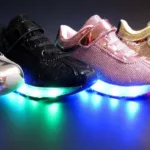Starting a small business is about as easy as walking a tightrope across the Grand Canyon: it feels like your company is one mistake away from sudden death. And while you’retaking care of big things—like registering your company and hiring employees—it’s easy to let the little things slide.
One “little thing” that can knock your small business seriously off-balance: its logo. Bad logo designs drive customers away or attract the wrong target audience—so the people who really need your products can’t find you. Not having a logo at all is also harmful, because people are less likely to buy from a brand they don’t recognize.
Creating a good logo design that draws customers to your brand will take work, but it’s definitely possible. Here are 4 ways to make sure your business logo will be a success.
Study Your Target Audience
Your target audience consists of people who will buy your product. It’s tempting to say “everyone” is part of your target audience, especially if you’re trying to boost sales, but it’s impossible to market to everyone. Besides—not every person needs every product.
Your logo’s job is to attract customers who need your product the most. For example, a clothing boutique that specializes in trendy women’s wear would most likely have a target audience of professional women aged 25-35. Its logo wouldn’t need to appeal to young girls, retired women, or men, because they aren’t part of the target audience.
Focusing on a specific demographic gives your logo a higher level of appeal to those customers—which actually leads to more sales. Once you identify your target audience, you can create a logo design that entices them to buy from you.
Define Your Brand Personality
Appealing to your target audience is half the battle. The other half is making sure your logo isn’t lying to them. Meaning, your logo needs to appeal to the target audience in a way that simultaneously stays true to your brand’s personality.
Let’s revisit the illustration of a trendy clothing boutique. If the brand’s logo is extremely elegant, the target audience will assume the store lets women shop for today’s latest luxury clothes. But if the store is actually a quirky, vintage shop like this one in LA, customers who are looking for a modern shopping experience will be confused when the shop doesn’t meet the expectations the logo set.
When a brand sets the bar for customers’ expectations, it either has to live up to those expectations or risk losing confused, disappointed customers. That’s why your logo design has to honestly reveal your brand’s personality.
Hire a Logo Designer
Many small business owners try to skip this step. They think they can save a little money by creating a logo in-house. But don’t be fooled—that Photoshop class you took in college didn’t prepare you for the struggles that come with designing an original logo.
An experienced logo designer knows how to weave your rough sketches, audience data, and brand identity into a cohesive logo. And while there are companies that spend thousands (or even millions) on logo designs, you don’t have to break the bank. You can find a skilled logo designer with reasonable rates, such as this Michigan-based design firm.
Working with small agencies is also a good idea because you get more face-time with the design team. Whereas large agencies take your initial suggestions and disappear to do the work, small firms are often willing to have more open communication and even help educate you on the design process.
Have a Plan for Implementing Your Logo
We’ve all heard horror stories of people who bought pets without realizing how big the animals would grow. Just like you don’t want a four foot alligator living in your bathtub, you don’t want a logo design with no place to go.
As with launching any marketing strategy, you need a plan to introduce your new logo—preferably before the design comes off the drawing board. One tactic is to use the logo in as many places as possible: website, signage, print ads, merchandise, packaging, and so on. The more customers see it, the more ingrained it will be in their minds.
You can also find a creative way to tell customers about your new logo. This could be an email or direct mail campaign to existing clients—or you can reach out to prospective clients to show them how your brand is improving. Or, run a creative social media campaign to introduce your logo in a fun, casual way.
Summing It Up
Bad logo designs can easily tip a small business into a downward spiral, so it’s critical that you get a professionally designed logo that works for your audience and your brand—not something you slapped together in Photoshop. When you follow these 4 tips, you’ll create a stellar logo design that will help your business hit the ground running.








